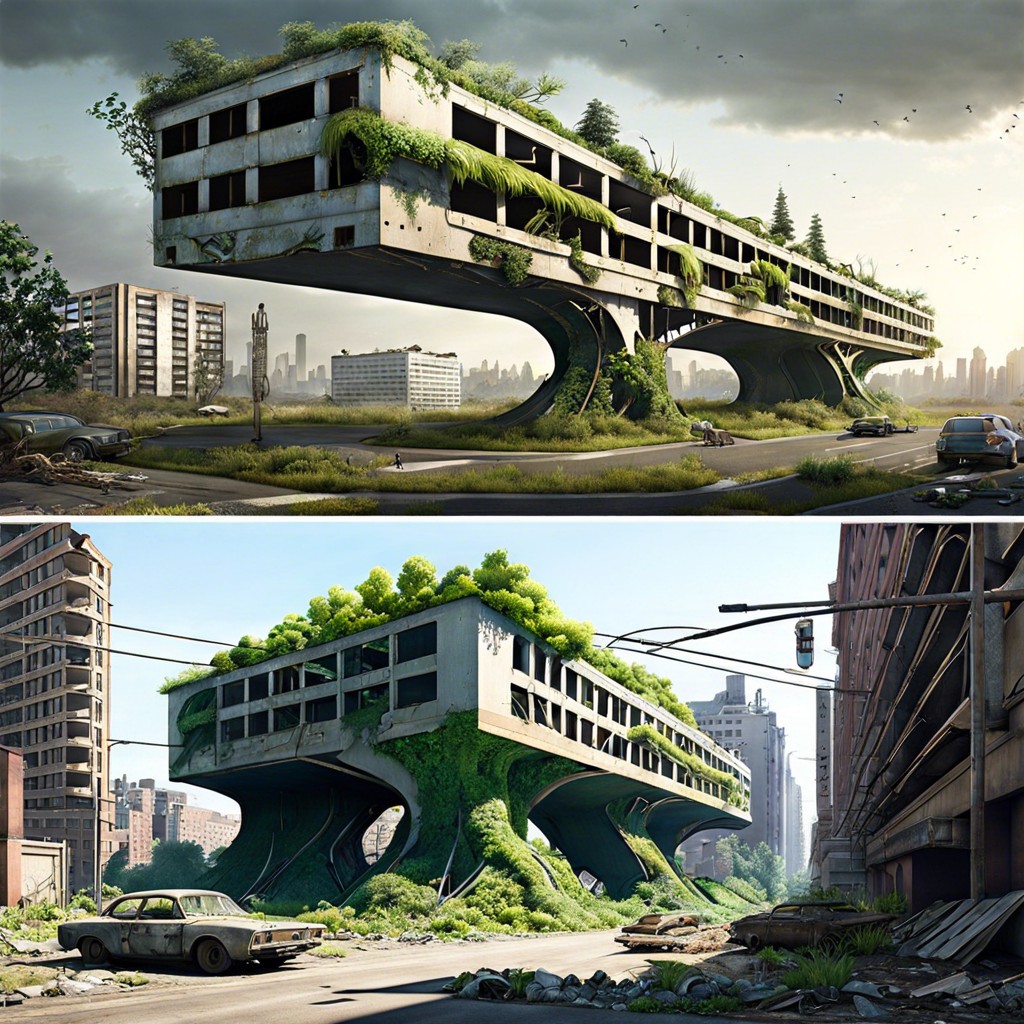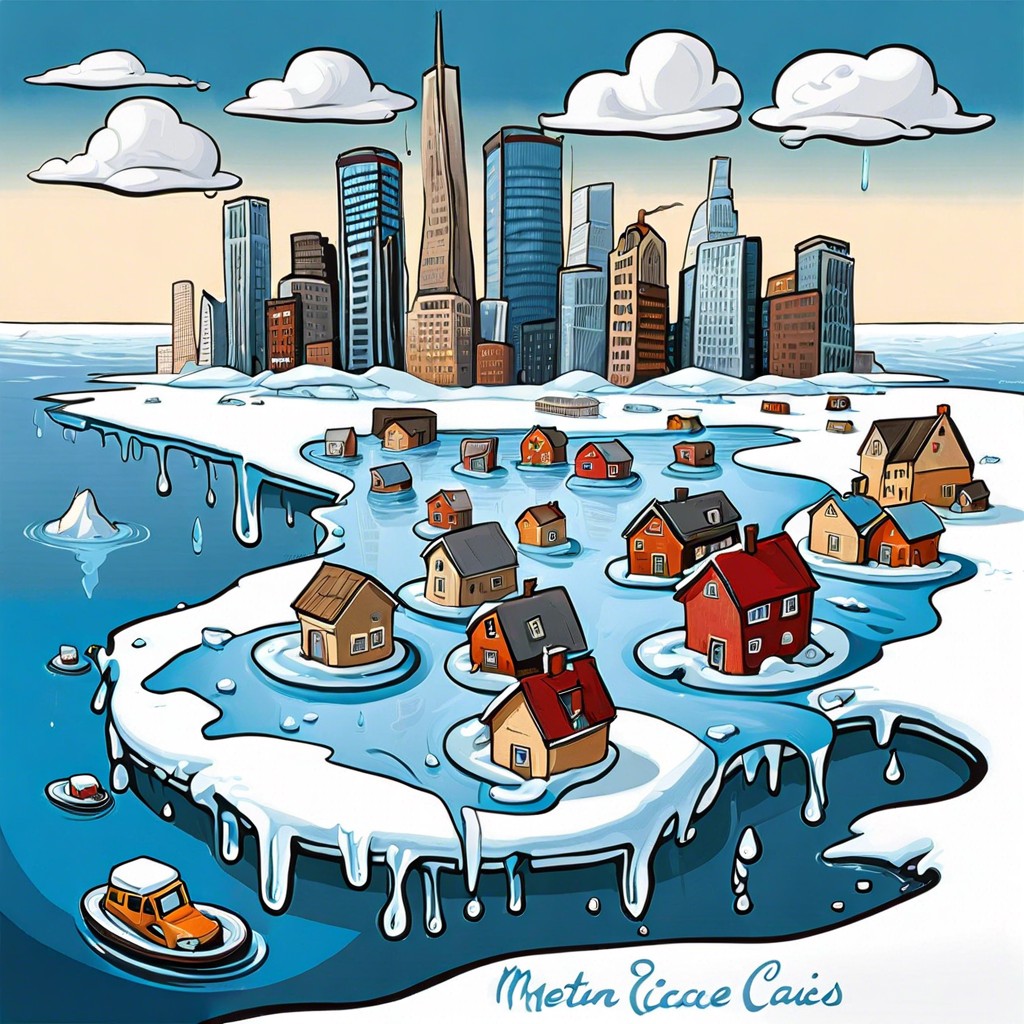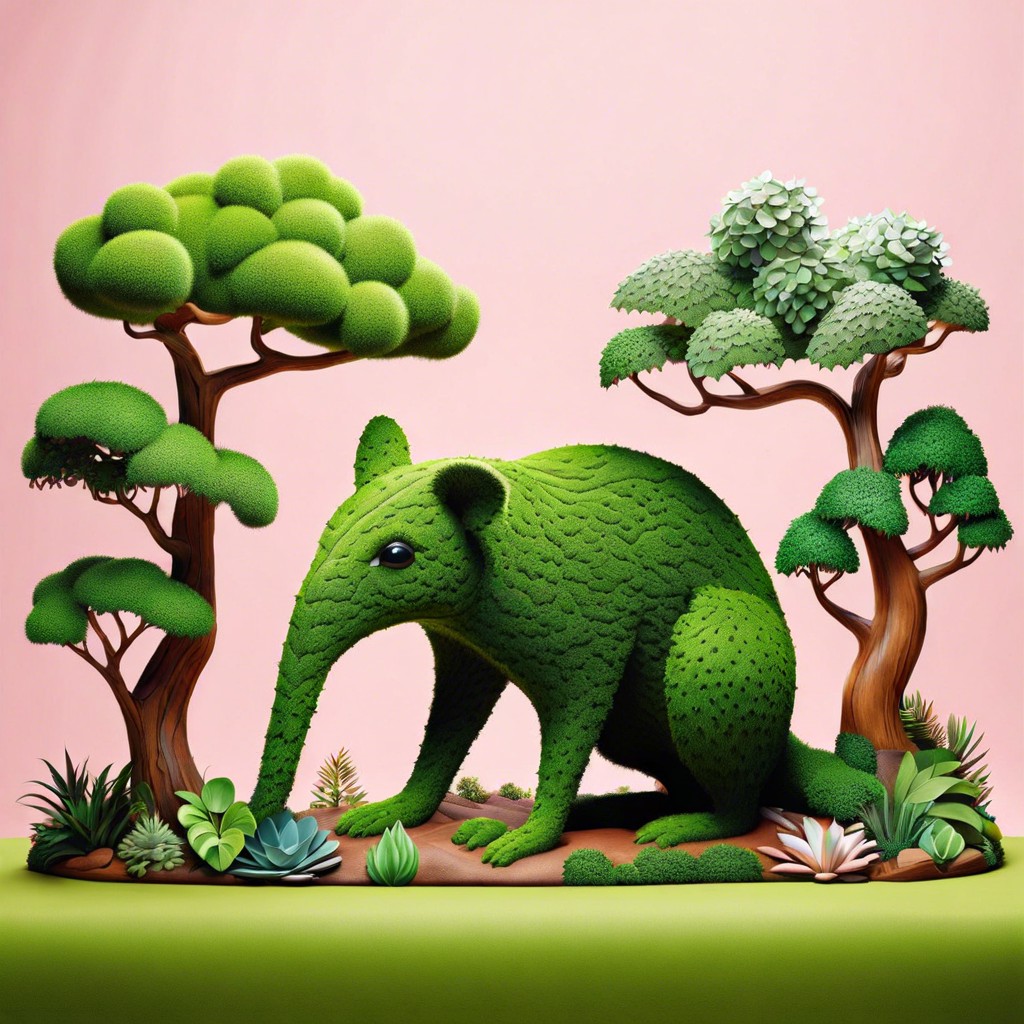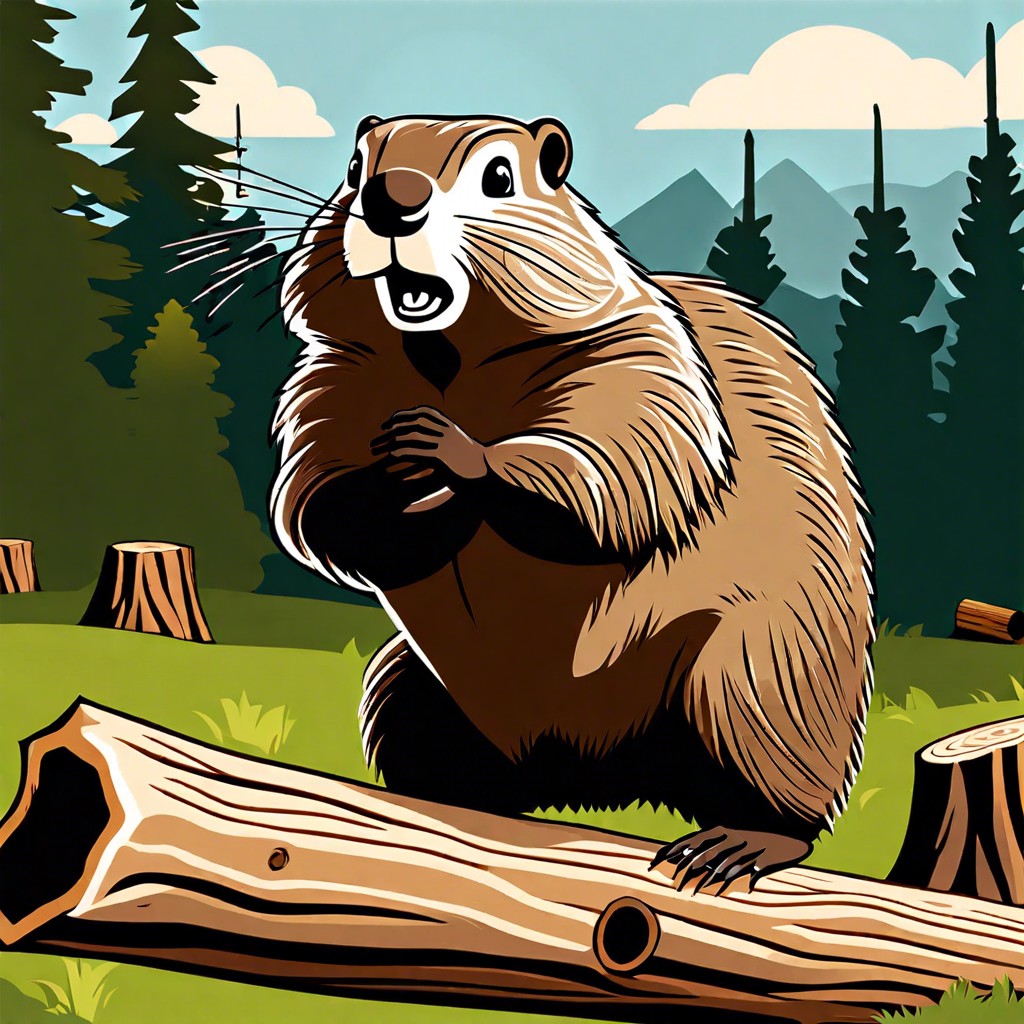Discover how Earth’s ecosystems and landscape would transform if humans suddenly vanished.
Picture a world where humankind pulls a Houdini and vanishes without a trace. What happens next? Think nature staging a dramatic comeback, cities crumbling like cookie towers, and wildlife taking over your favorite coffee shop. Immediate environmental changes would sweep through, pollution levels would nosedive, and animals would throw the wildest house parties. Yes, the forests we bulldozed and the oceans we polluted would begin to heal. Interested in how our absence would unfold? Stick around—this adventure through a human-less Earth will leave you spellbound!
Key takeaways:
- Immediate pollution decrease, plant reclaim, dams fail, animals adapt.
- Wildlife resurgence in cities, tigers may rebound, coral reefs regenerate.
- Human infrastructures decay, buildings crumble, homes rot, power plants shut down.
- Ecological evolution leads to biodiversity, new species emerge, invasive species explode.
- Climate improves, CO2 drops, oceans recover, forests flourish.
Immediate Environmental Changes

Imagine a human exit cue-d like a Broadway curtain call. Poof! Suddenly, no more lawnmowers, cars, or factories.
The air would clear up faster than your allergies on a hypoallergenic pillow. Pollution levels would plummet, leaving skies bluer than the jeans you wore in middle school.
Left unchecked, plant life would start reclaiming urban jungles. Sidewalks become nature’s canvas, sprouting weeds like a chia pet on steroids.
Meanwhile, dams and water treatment plants would fail. Rivers would burst free like teenagers at a summer music festival. Cities could become instant wetlands.
Dogs and cats? They’d need to adapt or buddy up with wildlife. A dog befriending a deer sounds like a Disney movie we didn’t know we needed.
Lastly, lights going out in cities would provide nighttime spectacles: every star in the galaxy, twinkling like Hollywood’s A-listers.
Wildlife Resurgence
Imagine the world turning into a giant nature reserve. Without us around, animals would reclaim spaces that were once theirs. Cities would become jungles where deer stroll through shopping malls and birds nest in office buildings.
Take Chernobyl, for example: humans left, and wildlife thrived. Wolves, bears, and even rare lynx now roam freely. Picture that scene everywhere. In the absence of human activity, populations of threatened species like tigers and rhinos might rebound.
Pollution sources would dry up, meaning cleaner rivers and oceans. With fewer chemicals killing off fish, aquatic life would boom. Coral reefs, currently bleaching due to human impact, could start to regenerate.
Predator-prey dynamics would normalize. Less fencing and more forest cover would create natural barriers and habitats. Ecosystems would balance themselves out, shifting back to a more natural order, where foxes are no longer urban scavengers but forest hunters, and pigeons might just remember how to find food without humans.
Structural Decay of Human Infrastructure
Picture gleaming skyscrapers slowly transforming into ghostly ruins. Without human maintenance, it wouldn’t take long for nature to reclaim its territory. Within a few years, unchecked vegetation would snake through the cracks of pavements and buildings. Roots would exert relentless pressure, eventually causing concrete to crumble.
Hydroelectric dams, without regular oversight, would likely fail. Waterways would flood surrounding areas, creating natural wetlands and altering landscapes.
Steel structures, no longer painted or treated, would begin to rust. Even our once-indestructible bridges would buckle and collapse.
Homes would be the first to go, as wood rots and pests invade. Roofing materials would deteriorate, exposing interiors to rain and wind.
Lastly, our power plants would shutdown, leading to widespread darkness, with urban areas becoming chaotic jungles of metal and glass.
A hauntingly beautiful transformation, don’t you think?
Long-term Ecological Evolution
Picture a world where nature is in charge of city planning. Trees sprout through concrete, ivy wraps skyscrapers, and parks extend into urban jungles. It’s a botanical coup d’état!
Biodiversity would flourish as human-caused disruptions vanish. Extinct species? They might get a second chance if preserved in seed banks and DNA repositories. Evolutionary processes would run wild, filling vacant ecological niches.
In our absence, animals would adapt to the new landscape. Urban foxes, raccoons, and pigeons might turn into the next apex predators. Imagine wolves hunting deer in former shopping malls, a wildlife documentary waiting to happen.
Remember invasive species? Without us acting as referees, some might overrun ecosystems, creating a natural selection free-for-all. It could be an evolutionary arms race on steroids.
And who knows? In a few million years, entirely new species could evolve. Perhaps a super-intelligent octopus steps in to solve climate change. Hey, a mollusk can dream, can’t it?
Impact On Climate and Pollution Levels
Carbon dioxide emissions would plummet almost overnight. Without humans industriously burning fossil fuels, the air would start to clear. No more traffic jams mean no clouds of smog hovering over cities. Imagine Los Angeles with air as fresh as a mountain meadow.
Factories would grind to a halt. With no smoke-belching chimneys, pollution levels drop dramatically. Nature takes a cleansing breath.
Oceans might recover, the underwater party starts again! Trash islands shrink, fish populations bloom, reefs regrow.
Lastly, forests – oh, how they’ll flourish. Abandoned croplands and urban spaces turn into green sanctuaries, as trees reclaim territories.
So, in essence, Earth breathes easier and sits back, finally enjoying a long-deserved vacation.




